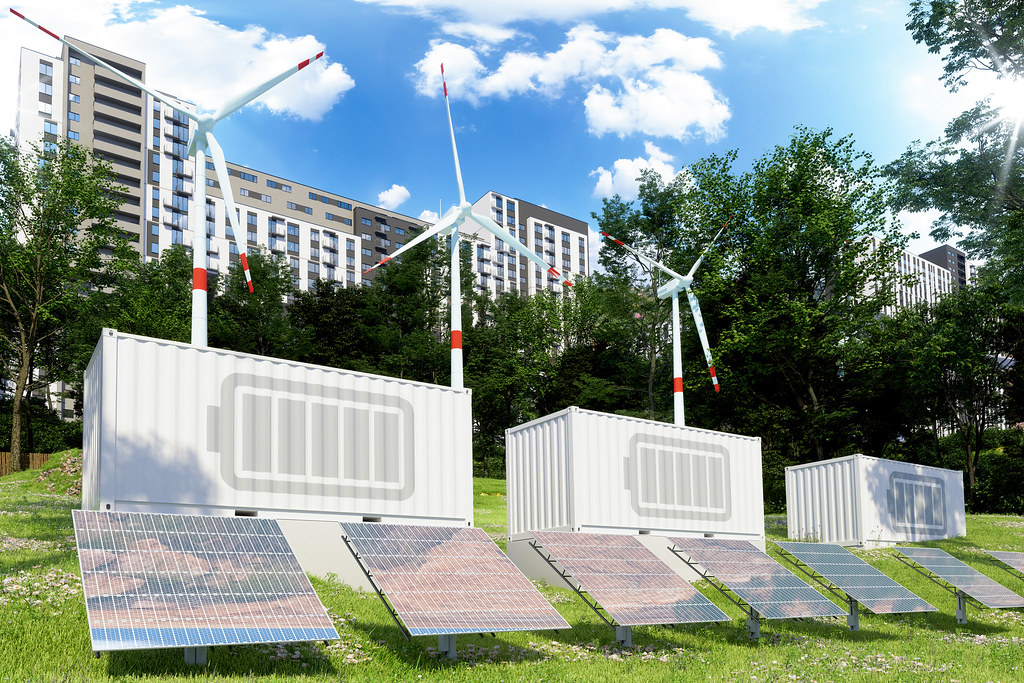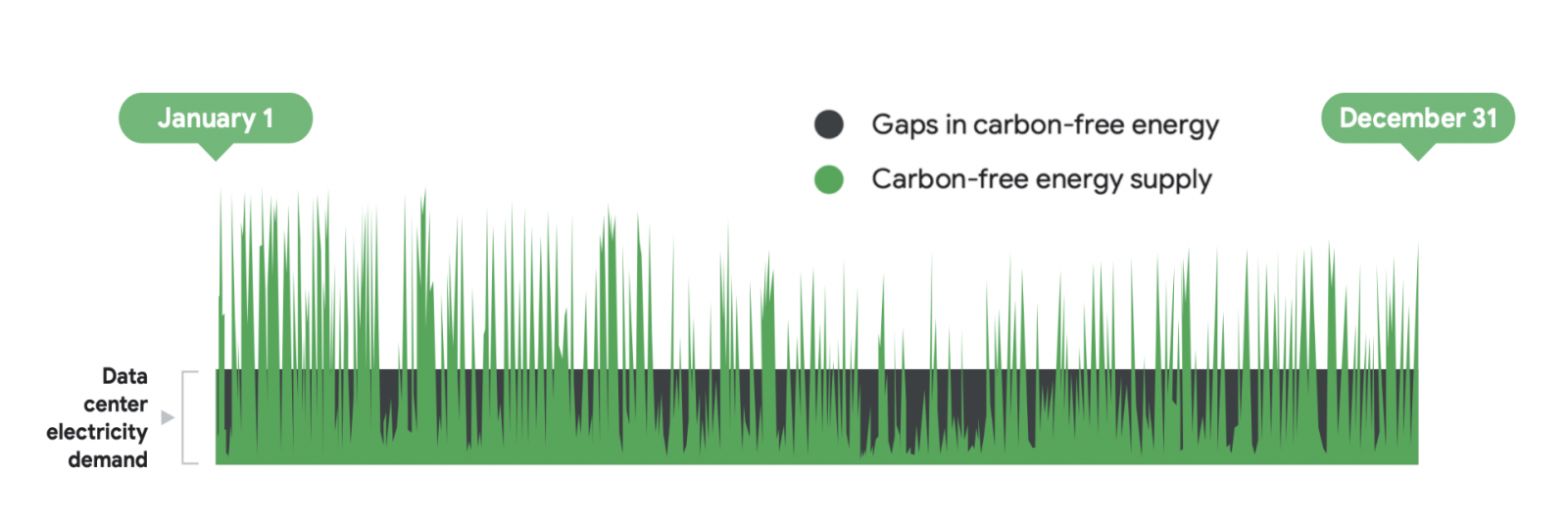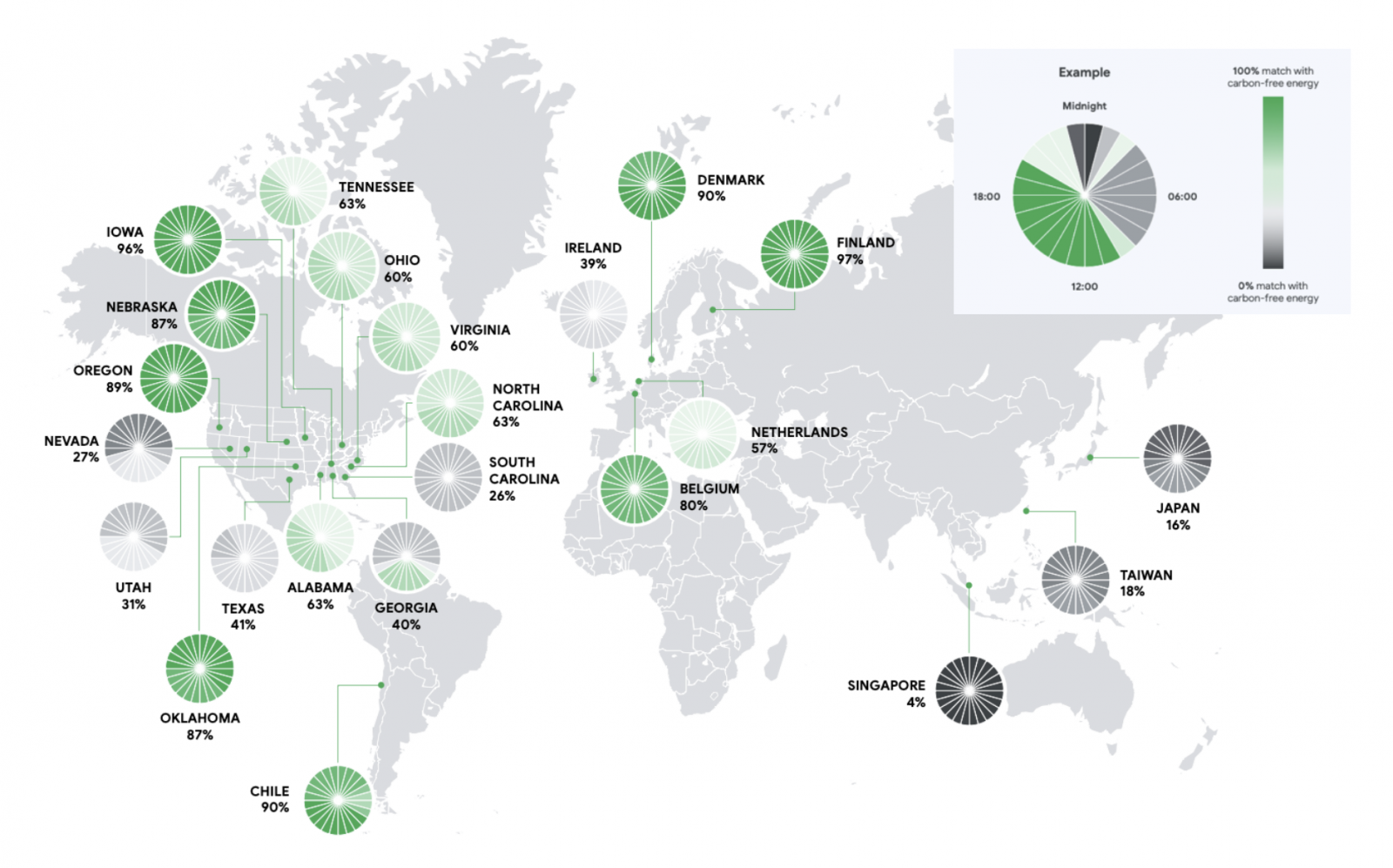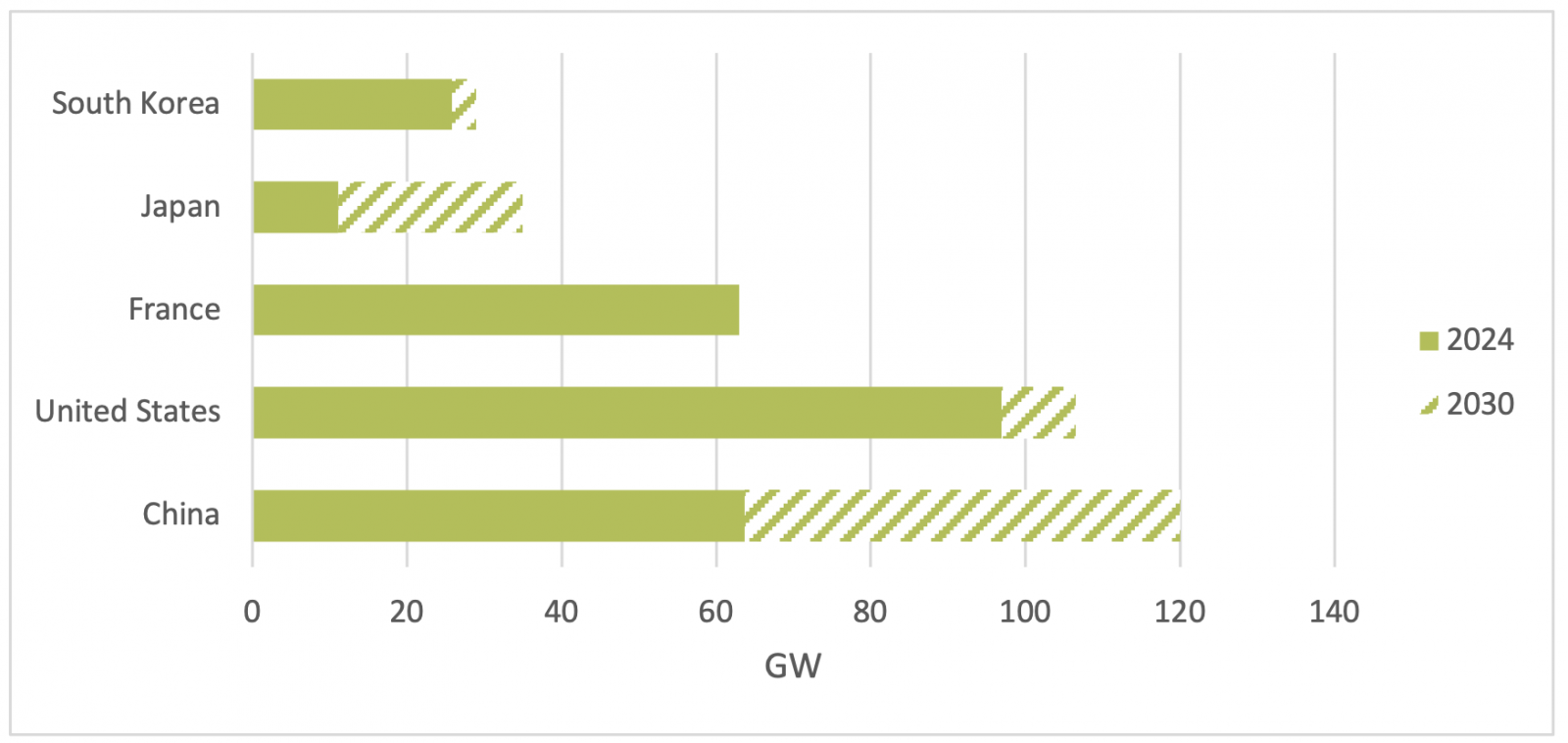
(Image: iStock)
Prominent corporations like Microsoft and Google have committed to realizing Carbon-Free Energy (CFE) 24/7 for their offices and operations by 2030, setting a precedent for others to follow.
The CFE 24/7 initiative represents a new frontier in corporate decarbonization, aiming to match every hour of electricity consumption with carbon-free energy. This approach marks a departure from traditional renewable energy goals by emphasizing hourly, real-time sourcing of clean energy.
Unlike RE100, CFE 24/7 encompasses technologies like nuclear energy and battery storage. This shift is timely given the mounting pressure on corporate sustainability, providing companies with a broader spectrum of tools to achieve their decarbonization objectives. This article discusses the challenges in adopting CFE 24/7 and its prospective trail in Asia.
Adoption of CFE 24/7 vs. RE100 in Asia
The RE100 initiative, which commits its signatories to 100% renewable electricity by a specified date, has gained traction across Asia. However, the majority of these commitments are met through purchasing renewable energy certificates (RECs) or power purchase agreements (PPAs). While these mechanisms have driven investment in renewable energy infrastructure, they do not necessarily guarantee that renewable energy consumption matches production on a real-time basis.
As the figure below demonstrates, when renewable energy is purchased on a yearly basis, there will be times when energy consumption is met by using brown electricity from the grid. CFE 24/7 offers a more rigorous and transparent framework, ensuring that every hour of electricity consumption is matched with carbon-free energy. Importantly, CFE 24/7 recognizes the use of nuclear energy and battery storage, driving substantial changes in energy sourcing strategies.

Figure 1. Google Annual Matching (Source: Google)
For Asia, which is home to rapidly growing economies and increasing energy demands, this model can provide a more robust pathway to sustainability. CFE 24/7 is especially important when considering power stability and cost premium as companies approach high renewable energy penetration. While the cost of renewable energy such as solar and wind have decreased over the years, as businesses approach higher renewable penetration, these benefits diminish as the requirement for grid stability and battery storage exponentially increases. However, battery storage cannot be claimed by companies as green power sourcing under RE100.
.png)
Challenges and solutions for granular RECs and power stability
While CFE 24/7 allows for alternative energy sources, adopting CFE 24/7 in Asia comes with its unique set of challenges. The higher granularity required by CFE 24/7 poses its own challenges. Businesses must use time-stamped RECs, which are not found in developing economies, where grid operators do not have the technology or infrastructure in place to track power generation by the hour.
Power stability is another issue due to the intermittency of solar and wind power throughout the day, asserting greater burden onto the grid. Looking at Google’s CFE 24/7 progress around the world, it is not hard to see its operations in Asia are laggards in the race, stressing the need for the region to scale up its carbon-free energy supply.

Figure 2. Google CFE 24/7 Progress in 2022 (Source: Google Environmental Report 2023)
One type of carbon-free energy supply is nuclear energy, which, driven by its potential to provide reliable, low-carbon power, has seen a global resurgence in recent years. The figure below shows planned nuclear energy capacity in major economies by 2030. In Asian countries where energy demand is expected to be driven by manufacture activities and data centers, nuclear energy planning appear to be more ambitious in Northeast Asian countries like Japan and China.

Figure 3. Planned nuclear energy capacity by 2030
Southeast Asia’s window of opportunity
For Southeast Asia, the presence of nuclear power plants is very weak and future capacity seems elusive as shown in the table below. Aside from nuclear energy, battery storage is an alternative accepted under CFE 24/7 that has great development potential in the region. Overall, battery storage capacity planning appears to be led by Singapore, Malaysia, and the Philippines.
| Country | Nuclear Energy | Battery Storage |
| Cambodia | No clear policy planning | No clear policy planning |
| Indonesia | 31 GW (4% of electricity demand) by 2060, with the first plants by 2039 | 5 MW under construction |
| Laos | No clear policy planning | No clear policy planning |
| Malaysia | Plan for nuclear to provide 10-15% of electricity by 2030 now abandoned | 400 MWh to be launched in 2024 Q2, 500 MW between 2030 to 2034 |
| Myanmar | 55 MW in planning | No clear policy planning |
| Philippines | 1200 MW by 2032, 2400 MW by 2035, 4800 MW by 2050 | 360 MW in operation in 2024, 1 GW under construction |
| Singapore | 10% of electricity demand by 2050 | 285 MWh in operation |
| Thailand | 2 GW by 2030 (PDP 2010) | No clear policy planning |
| Vietnam | SMRs to be included in the energy mix post-2030 | 1 GW by 2035 |
Table 1. Capacity planning for nuclear and battery storage in ASEAN Countries
As Southeast Asia's energy landscape evolves, the integration of the ASEAN power grid (APG) under the CFE 24/7 framework will be pivotal in meeting the region's growing energy demands while ensuring environmental sustainability. This is especially the case when carbon-free energy supply varies from country to country. Bilateral power purchase agreement enabled by the APG opens the door for businesses to tap into needed energy supply aggregated at the regional level.
Transition from RE100 to CFE 24/7
Corporates may consider sustainability pledges other than RE100 where unbundled REC purchase cannot fulfil their Scope 2 decarbonization need. This scenario is particularly relevant in Asia, where rapid industrial growth and energy demand necessitate a more dynamic and reliable energy supply framework. However, given the challenges around REC granularity and limited nuclear energy planning, we expect businesses facing decarbonization pressure to opt for CFE over RE100 where nuclear and battery storage are available and accessible.
In our view, CFE 24/7 will likely gain traction in Northeast Asia where nuclear energy supply will be greater. The compact’s presence will only begin to grow in Southeast Asia in a much later time due to the region’s technical and energy capacity constraints.
We believe that the big techs’ pledges are the benchmark of the future direction of corporate sustainability and are bound to have rippling effect across their supply chain around the world. When it comes to the adoption of standard in the region, it is important for corporates to first determine what is more aligned with their own business development strategy. For instance, do they prefer standards with stricter rules on REC usage or not? Do they think one standard is more recognized by the public than the other? Once that is decided, then corporates can see what mechanisms and resources they can utilize in their location.